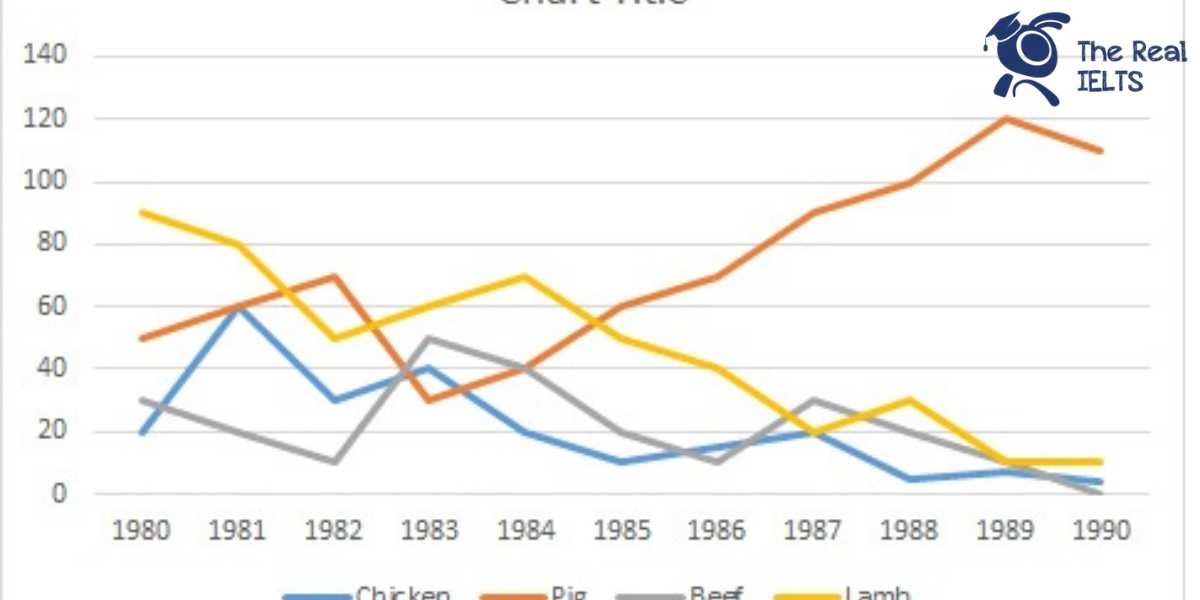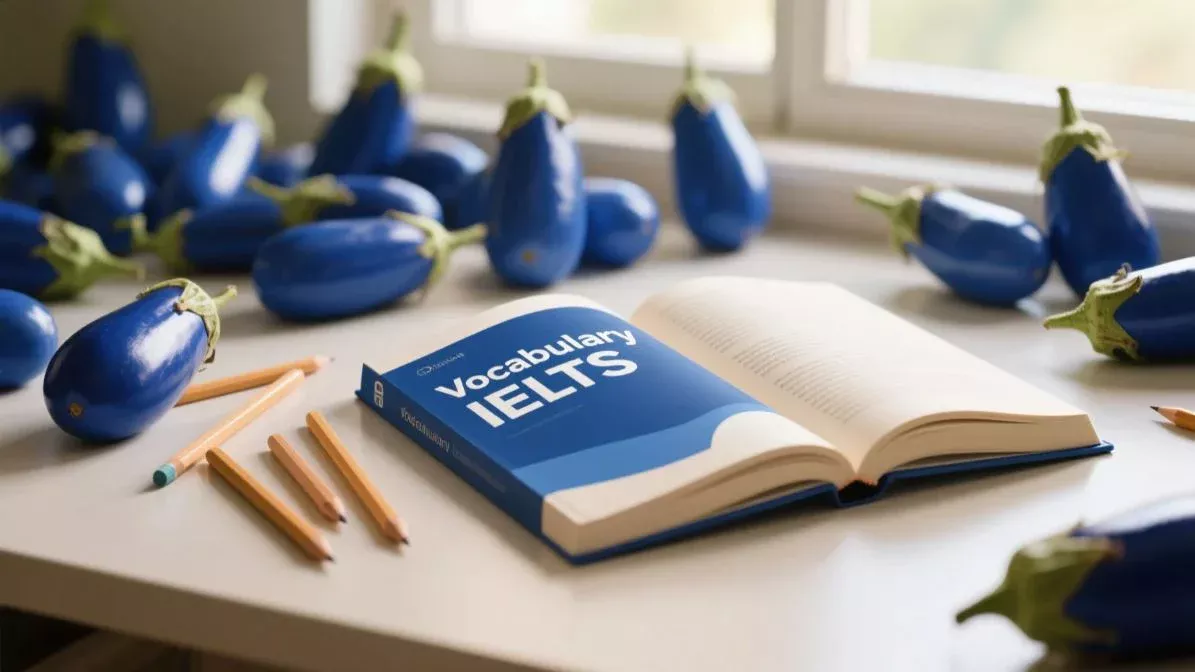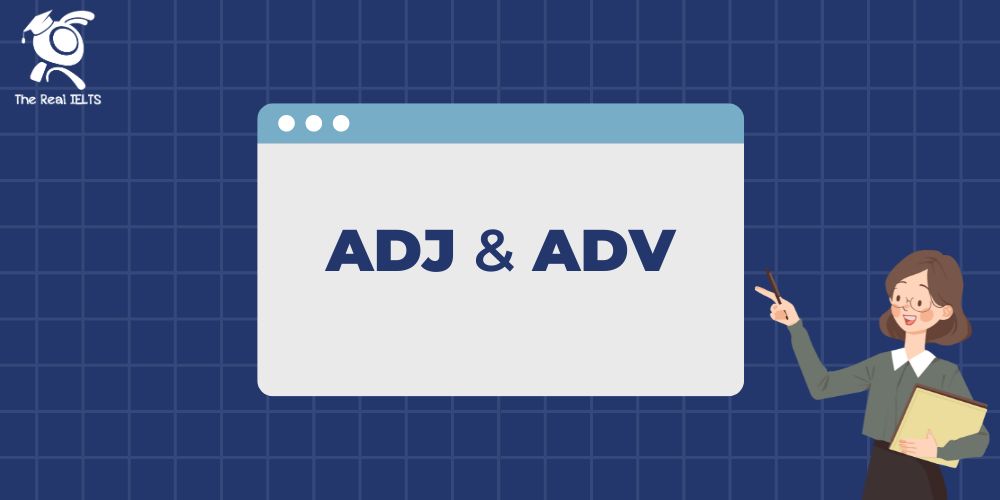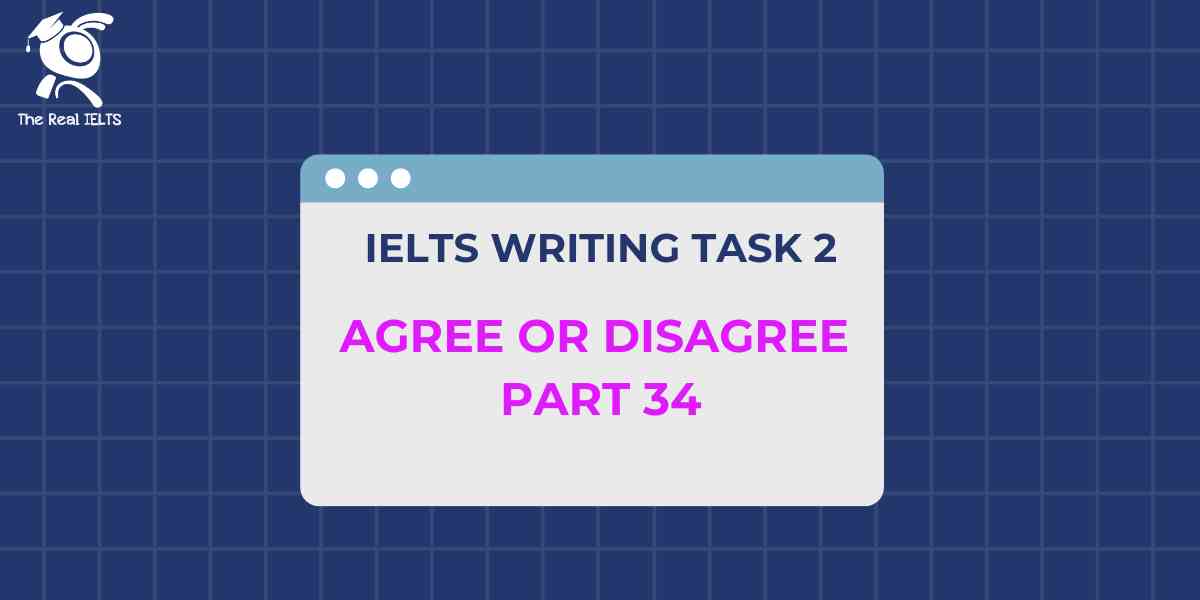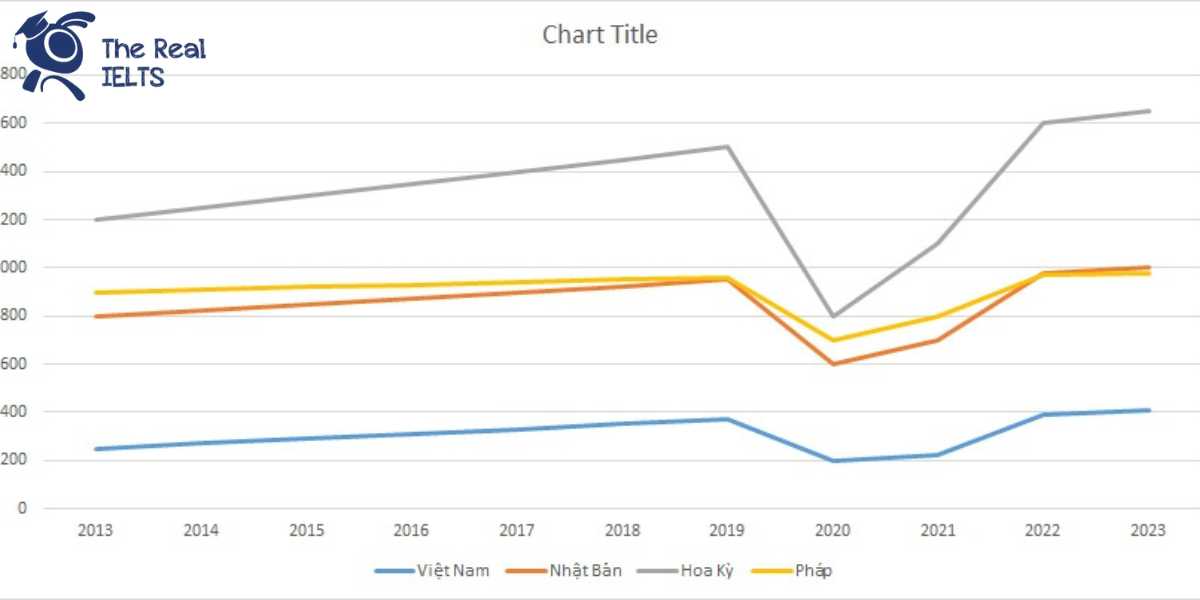IELTS Writing Task 1 yêu cầu thí sinh mô tả, phân tích và so sánh thông tin từ biểu đồ, bảng, đồ thị hoặc sơ đồ. Nhiệm vụ này đòi hỏi kỹ năng tóm tắt dữ liệu một cách rõ ràng và logic, sử dụng ngôn ngữ học thuật phù hợp. Thời gian viết khoảng 20 phút với độ dài tối thiểu 150 từ.
Bạn có thể đọc lại bài nói về Task 1 tại đây: IELTS Writing Task 1 cần lưu ý những gì?
Bạn cũng có thể đọc thêm bài viết này vì đề bài này là IELTS Writing Task 1 biểu đồ Line Graph.
Sau đây là bài tập IELTS Writing Task 1 các bạn có thể luyện tập thử
You should spend about 20 minutes on this task
Below is a line chart depicting the consumption of different types of meat by a family in the USA.
You should write at least 150 words.
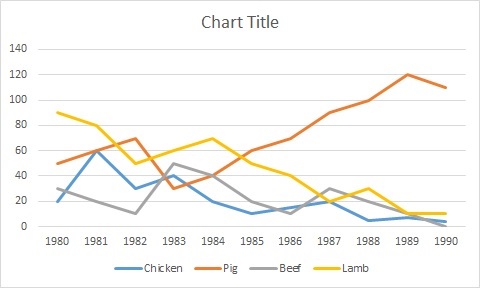

Bài mẫu số 1: Đúng cấu trúc đọc ở bài hướng dẫn làm Line Graph
Introduction:
The line graph illustrates the consumption levels of four types of meat—chicken, pig, beef, and lamb—over a period from 1980 to 1990.
Overview:
Overall, the consumption of pig meat demonstrated a general upward trend, while beef and lamb consumption exhibited a sharp decline over the years. Chicken consumption showed considerable fluctuations throughout the period.
Body 1:
In 1980, lamb was the most consumed meat at 90 units, followed by pig at 50 units, beef at 30 units, and chicken at 20 units. The following year saw significant changes, with chicken consumption tripling to 60 units, pig meat increasing to 60 units, while beef and lamb decreased to 20 and 80 units, respectively. The trend for chicken then became erratic, falling to 30 units in 1982 and bouncing back to 40 units in 1983 before experiencing a general decline to a mere 4 units by 1990.
Body 2:
Pig meat consumption, on the other hand, rose steadily from 50 units in 1980 to a peak of 120 units in 1989, before a slight dip to 110 units in 1990. Beef consumption fluctuated initially but faced a steady decline from 50 units in 1983 to no consumption recorded in 1990. Lamb, which started at a high of 90 units, dropped dramatically to 20 units by 1987 and further down to 10 units in 1989 and 1990. This data reflects significant changes in meat consumption preferences over the decade, with a noticeable shift away from lamb and beef towards pig meat.
Bài mẫu số 2: không chia làm 4 phần như bài hướng dẫn Line Graph nhưng vẫn đảm bảo yêu cầu
The line graph illustrates the consumption of four types of meat—chicken, pig, beef, and lamb—from 1980 to 1990.
Overall, the consumption of chicken and beef showed significant fluctuations, while the consumption of pig meat increased consistently over the period. Lamb consumption, on the other hand, saw a dramatic decline.
In 1980, lamb was the most consumed meat at 90 units, but its consumption drastically decreased over the years, reaching a mere 10 units by 1989 and 1990. Chicken consumption started relatively low at 20 units, peaked at 60 units in 1981, and then fluctuated, ending at 4 units in 1990. Beef consumption also varied, starting at 30 units in 1980, peaking at 50 units in 1983, and eventually falling to 0 units in 1990.
Pig meat consumption was unique in its consistent upward trend. It began at 50 units in 1980 and increased steadily, reaching a peak of 120 units in 1989 before slightly declining to 110 units in 1990.
In conclusion, over the given period, pig meat emerged as the most popular meat, whereas lamb saw a steady decline in consumption. Chicken and beef experienced varied fluctuations, with chicken ending the period as the least consumed meat.
Các bạn có thể đăng ký chữa bài IELTS Writing Task 1 miễn phí tại đây: (Bạn phải đăng nhập gmail để đăng ký form)


